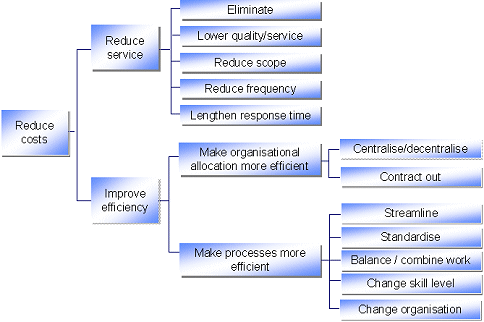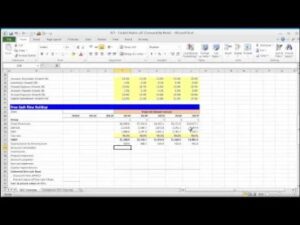
Essentially, this is the book value, or accounting value, of the shareholders’ stake in the company. It is principally made up of the capital contributed by shareholders over time and profits earned and retained by the company, including that portion of any profit not paid to shareholders as a dividend. Like your financial position, a company’s financial situation is defined by its assets and liabilities. As you depreciation and amortization on the income statement can see from our example template, each balance sheet account is listed in the accounting equation order.
Understanding an Analysis of a Company’s Financial Position

Both methods are legal in the United States, although GAAP is most commonly used. The main difference between the two methods is that GAAP is more “rules-based,” while IFRS is more “principles-based.” Both have different ways of reporting asset values, depreciation, and inventory, to name a guide to basic accounting principles a few. The numbers in a company’s financial statements reflect the company’s business, products, services, and macro-fundamental events.
Companies often sell products or services to customers on credit; these obligations are held in the current assets account until they are paid off by the clients. Assets are what a company uses to operate its business, while its liabilities and equity are two sources that support these assets. It allows you to see what resources it has available and how they were financed as of a specific date. It shows its assets, liabilities, and owners’ equity (essentially, what it owes, owns, and the amount invested by shareholders). Liabilities are debt obligations that the company owes other companies, individuals, or institutions.
The Beginner’s Guide to Reading & Understanding Financial Statements
The meaningful interpretation and analysis of balance sheets, income statements, and cash flow statements to discern a company’s investment qualities is the basis for smart investment choices. The balance sheet includes information about a company’s assets and liabilities, and the shareholders’ equity that results. These things might include short-term assets, such as cash and accounts receivable, inventories, or long-term assets such as property, plant, and equipment (PP&E).
If the corporation goes into liquidation, then the holders of this stock have less priority to get payments than others preferred shareholders or lenders. For a private company, we usually called owner equity, and for a corporation, we usually call it shareholders or stockholder equity. If part of receivables is expected to receive over twelve months, then they have to class into long-term assets. Lastly, inventory represents the company’s raw materials, work-in-progress goods, and finished goods. Depending on the company, the exact makeup of the inventory account will differ. For example, a manufacturing firm will carry a large number of raw materials, while a retail firm carries none.
Get Your Questions Answered and Book a Free Call if Necessary
- Companies often sell products or services to customers on credit; these obligations are held in the current assets account until they are paid off by the clients.
- Retain earnings can be calculated by the accumulation of the beginning balance of retained earnings plus net income during the year and minus dividend payments during the year.
- We may earn a commission when you click on a link or make a purchase through the links on our site.
- These ratios can give investors an idea of how financially stable the company is and how the company finances itself.
The makeup of a retailer’s inventory typically consists of goods purchased from manufacturers and wholesalers. If you are a shareholder of a company or a potential investor, it is important to understand how the balance sheet is structured, how to read one, and the basics of how to analyze it. We accept payments via credit card, wire transfer, Western Union, and (when available) bank loan. Some candidates may qualify for scholarships or financial aid, which will be credited against the Program Fee once eligibility is determined. All programs require the completion of a brief online enrollment form before payment. If you are new to HBS Online, you will be required to set up an account before enrolling in the program of your choice.
Operating activities detail cash flow that’s generated once the company delivers its regular goods or services, and includes both revenue quickbooks online accountant pricing and expenses. Investing activity is cash flow from purchasing or selling assets—usually in the form of physical property, such as real estate or vehicles, and non-physical property, like patents—using free cash, not debt. Financial statements can be used to assess a company’s financial health, performance, and cash flow. This information can be used to make informed business decisions about things like investment opportunities, pricing strategies, and expense management. From the balance sheet above, we can see that as of September 2021, Apple, Inc.’s total assets amount to $351,002,000. Its total liabilities are $287,912,000, and total shareholders’ equity is $63,090,000, which, when lumped together, will equal the total assets of $351,002,000.
Like most other retailers, The Outlet’s inventory represents a significant proportion of its current assets, and so should be carefully examined. Since inventory requires a real investment of precious capital, companies will try to minimize the value of a stock for a given level of sales, or maximize the level of sales for a given level of inventory. So, if The Outlet sees a 20% fall in inventory value together with a 23% jump in sales over the prior year, this is a sign they are managing their inventory relatively well. This reduction makes a positive contribution to the company’s operating cash flows. A cash flow statement is another type of financial statement that provides a snapshot of a business’s cash inflow and outflow during a specific period. This statement shows how much cash is being generated or used by a company, and can be used to assess its financial health.
However, companies may choose to prepare it more or less frequently depending on their needs. The payment for the non-current asset does not affect the holding of the proprietor (their capital) or current liabilities, which is because the business has no outside debts at this stage. Normally, though, the listing and grouping of assets and liabilities on a balance sheet would be made in greater detail at the end of the trading period, perhaps every six months or only once a year. For information pertaining to the registration status of 11 Financial, please contact the state securities regulators for those states in which 11 Financial maintains a registration filing. The accuracy of financial statements is only as good as the information utilized to prepare them. The financial statements will also be inaccurate if a company’s accounting records are inaccurate.
